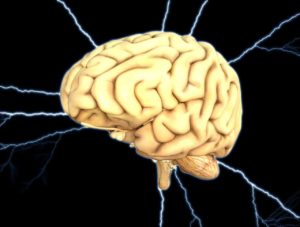In today’s hectic and demanding world, finding true happiness and peace of mind can often feel like an elusive goal. However, with the Unlock Blissful Brain in Just 7 Steps program, individuals have the opportunity to embark on a transformative journey towards a more positive and fulfilling life.
This comprehensive course, developed by renowned expert Dr. Dawson Church, offers practical techniques and meditations to retrain the brain and cultivate a state of bliss.
But what exactly are these seven steps? How do they work? And what kind of benefits can one expect to achieve? These questions, and more, will be explored in the following discussion, as we delve into the fascinating world of unlocking the blissful brain.
Understanding the Power of Bliss Brain
 Understanding the power of the bliss brain is crucial for those seeking to enhance their overall well-being and achieve a more positive mindset.
Understanding the power of the bliss brain is crucial for those seeking to enhance their overall well-being and achieve a more positive mindset.
The science behind the bliss brain reveals its remarkable benefits, particularly in relationships. Research has shown that cultivating a bliss brain state can lead to improved interpersonal connections and greater relationship satisfaction.
When individuals experience bliss, they become more compassionate, empathetic, and understanding towards others, fostering healthier and more harmonious relationships. Additionally, the bliss brain state promotes emotional regulation, reducing conflict and enhancing communication skills.
Studies have also demonstrated that individuals with a bliss brain are more likely to exhibit prosocial behaviors, such as kindness and generosity, contributing to the overall well-being of their relationships.
Step 1: Setting Intentions for Positive Change
Cultivating a bliss brain begins with the crucial step of setting intentions for positive change, a process that allows individuals to consciously direct their focus and energy towards achieving a more positive mindset and enhancing their overall well-being. Intention setting is a powerful tool that can help manifest positive change in our lives.
The science behind the power of positive thinking suggests that when we set positive intentions, we activate the reticular activating system (RAS) in our brain, which filters information and directs our attention towards opportunities that align with our intentions. This can lead to increased motivation, resilience, and a greater sense of well-being.
Step 2: Cultivating Mindfulness and Awareness
To cultivate mindfulness and awareness, individuals can engage in practices that promote present moment awareness and non-judgmental observation of their thoughts, emotions, and sensations. Cultivating mindfulness involves intentionally paying attention to the present moment without judgment.
This can be achieved through various techniques such as meditation, breathing exercises, and body scans. These practices help individuals develop awareness of their mental and physical states, as well as their surroundings.
By cultivating mindfulness, individuals can become more attuned to their thoughts and emotions, allowing them to respond to situations in a more calm and thoughtful manner. Research has shown that mindfulness can lead to reduced stress, improved emotional well-being, and increased cognitive functioning.
It is a valuable tool for developing self-awareness and enhancing overall mental health.
Step 3: Rewiring Negative Thought Patterns
In order to transform negative thought patterns, individuals can employ evidence-based techniques that promote the rewiring of the brain. Understanding the science behind thought patterns can help in developing effective strategies for rewiring negative thoughts.
Here are four strategies that have been proven to be effective:
-
Cognitive restructuring: This technique involves identifying and challenging negative thoughts, replacing them with more positive and realistic ones. By consciously changing our thought patterns, we can gradually rewire our brain to default to more positive thinking.
-
Mindfulness meditation: Regular practice of mindfulness meditation can help increase awareness of negative thought patterns and reduce their impact. This technique involves observing our thoughts without judgment and cultivating a more compassionate and accepting mindset.
-
Positive affirmations: Repeating positive affirmations can help counteract negative self-talk. By consciously affirming positive beliefs about ourselves, we can reprogram our brain to focus on the positive aspects of our lives.
-
Gratitude practice: Cultivating a gratitude practice can shift our focus from negative to positive aspects of our lives. By regularly acknowledging and appreciating the things we are grateful for, we can train our brain to seek out and amplify positive experiences.
Step 4: Embracing Gratitude and Appreciation
Gratitude and appreciation play a crucial role in rewiring our brains towards a more positive and fulfilling mindset. Practicing gratitude involves acknowledging and appreciating the good things in our lives, which can lead to increased happiness and overall well-being.
The science of appreciation shows that when we focus on the positive aspects of our experiences, our brain releases neurotransmitters like dopamine and serotonin, which promote feelings of joy and contentment.
Research has shown that regularly practicing gratitude can have numerous benefits, including reducing stress and anxiety, improving relationships, and enhancing our overall mental and physical health. By consciously cultivating a mindset of gratitude, we can shift our attention away from negativity and train our brains to automatically look for the positive aspects of our lives.
Incorporating gratitude practices, such as keeping a gratitude journal or expressing gratitude to others, can help us rewire our brains towards a more positive and blissful state. By embracing gratitude and appreciation, we can unlock the full potential of our brains and experience greater happiness and fulfillment in our lives.
Step 5: Nurturing Self-Compassion and Self-Love
Building upon the foundation of gratitude and appreciation, the next crucial step towards rewiring our brains for a more positive and fulfilling mindset is nurturing self-compassion and self-love. Developing self-compassion skills and practicing self-care can have a profound impact on our overall well-being and mental health.
Here are four self-care practices that can help foster self-compassion and self-love:
-
Practice self-kindness: Treat yourself with kindness and understanding, just as you would treat a close friend or loved one. Be gentle and forgiving towards yourself, especially during difficult times.
-
Cultivate self-acceptance: Embrace your strengths and weaknesses, accepting yourself as you are without judgment or comparison to others. Recognize that you are worthy of love and respect.
-
Set healthy boundaries: Prioritize your needs and set boundaries to protect your physical, emotional, and mental well-being. Learn to say no when necessary and prioritize self-care activities.
-
Engage in self-reflective practices: Take the time to reflect on your thoughts, emotions, and experiences. Journaling, mindfulness meditation, or therapy can help you gain insight into yourself and develop a deeper understanding and acceptance of who you are.
Step 6: Creating a Blissful Daily Routine
To cultivate a blissful daily routine, it is essential to incorporate intentional practices that promote well-being and nurture a positive mindset. Creating habits and daily rituals that support a positive mental state can have a profound impact on overall happiness and fulfillment.
Research has shown that consistent engagement in activities such as meditation, exercise, journaling, and gratitude practices can significantly boost mood, reduce stress, and improve overall well-being. By incorporating these practices into a structured daily routine, individuals can create a sense of stability and purpose in their lives.
It is important to set aside dedicated time each day for these practices, as consistency is key to reaping their benefits. Additionally, it can be helpful to establish a morning and evening routine to anchor the day and promote relaxation and restful sleep.
Frequently Asked Questions
How Long Does It Take to See Results From the Getting Into Bliss Brain Course?
The timeframe to see results from the Getting Into Bliss Brain course varies from person to person. Results can be measured based on the individual’s commitment to the course and their ability to implement the techniques taught.
It is important to note that retraining the brain takes time and consistent practice. Some individuals may start experiencing benefits within a few weeks, while others may take longer.
The effectiveness of the course can be evaluated by tracking improvements in happiness, stress reduction, and overall well-being.
Can the Techniques Taught in the Course Be Applied to Specific Areas of Life, Such as Career or Relationships?
Applying the techniques taught in the course, ‘Getting Into Bliss Brain,’ can indeed have a positive impact on specific areas of life, such as career development and improving communication in relationships.
By retraining the brain to default to blissful thinking, individuals can experience increased happiness, reduced stress, and improved overall well-being, which can directly contribute to better performance in the workplace and enhanced relationships.
The course offers practical techniques to achieve these benefits, allowing individuals to apply them in various aspects of their lives.
Are There Any Additional Resources or Support Available to Supplement the Course Material?
Additional resources and support are available to supplement the course material of ‘Unlock Blissful Brain in Just 7 Steps.’ These resources aim to enhance the learning experience and provide further guidance in applying the techniques taught in the course to specific areas of life, such as career or relationships.
These supplementary materials may include articles, books, videos, or online forums where participants can connect with fellow learners and share their experiences. Access to these resources can further deepen understanding and help individuals achieve optimal results in their personal and professional lives.
Is the Course Suitable for Beginners With No Prior Experience in Meditation or Mindfulness?
The course is highly accessible to beginners with no prior experience in meditation or mindfulness.
Dr. Dawson Church’s guidance and the practical techniques provided in the course make it easy for beginners to understand and implement.
The step-by-step approach ensures a gradual progression towards retraining the brain for blissful thinking.
The benefits of defaulting to bliss, such as increased happiness, reduced stress and anxiety, and improved overall well-being, are attainable for beginners through this course.
Can the Techniques Learned in the Course Be Integrated Into a Busy Schedule?
Integrating the techniques learned in the course into a busy schedule can be challenging but beneficial. Balancing mindfulness with work and family requires strategic planning and prioritization.
It is essential to set aside dedicated time each day for meditation and practice. Utilizing mindfulness techniques during daily activities, such as taking short mindful breaks or incorporating mindful eating, can also be helpful.
Conclusion
Unlock Blissful Brain in Just 7 Steps offers a comprehensive and evidence-based approach to retraining the brain for lasting positivity and bliss.
With practical techniques and meditations, individuals can break free from negative thinking patterns and experience increased happiness, reduced stress, and improved well-being.
Furthermore, the course provides a 60-day money-back guarantee, ensuring a risk-free investment.
As studies have shown, practicing gratitude and self-compassion can lead to significant improvements in mental health and overall life satisfaction.





